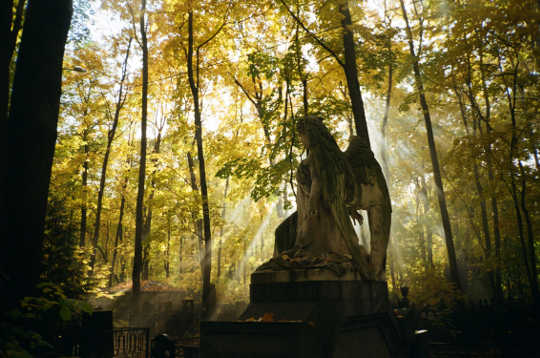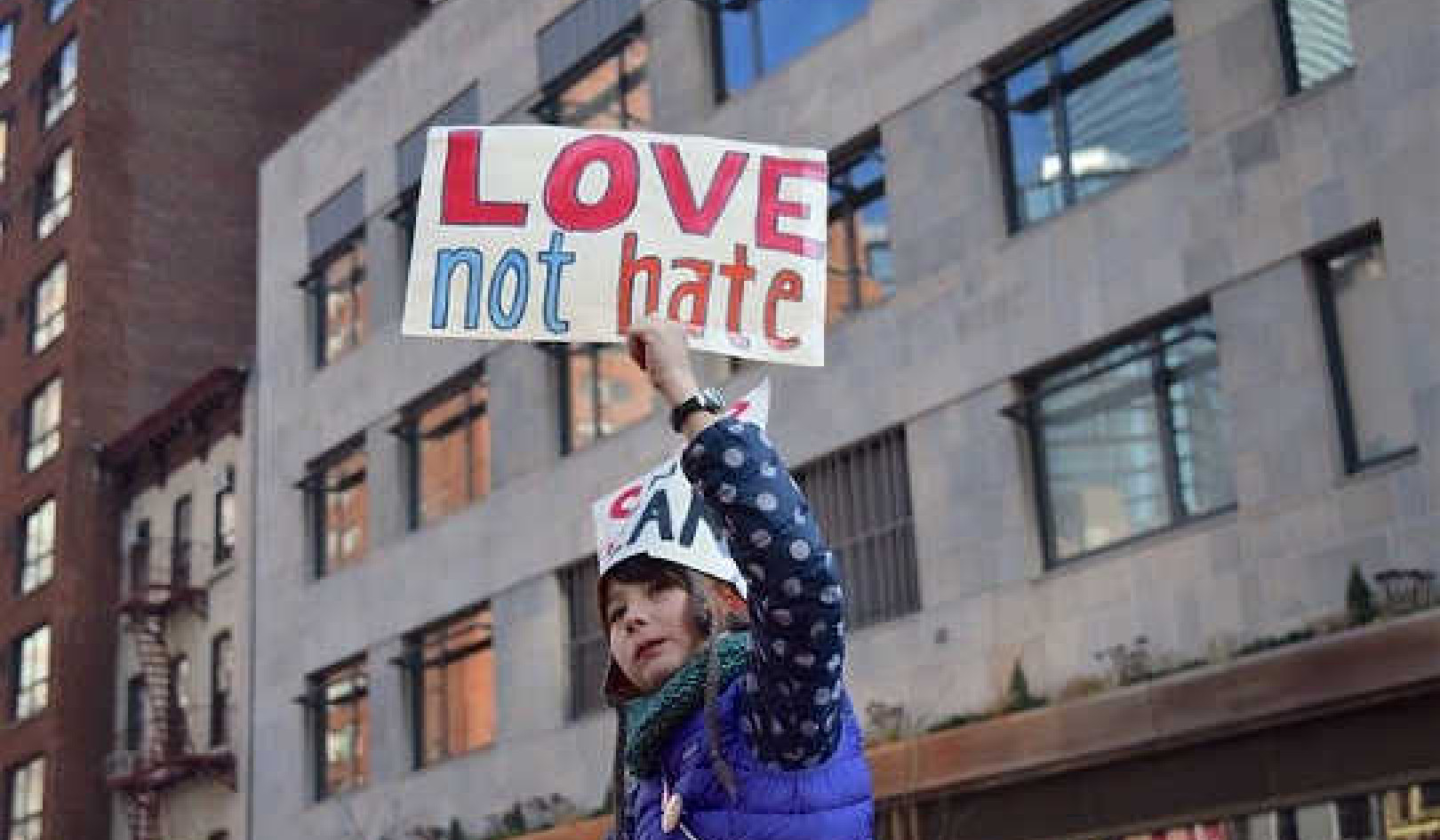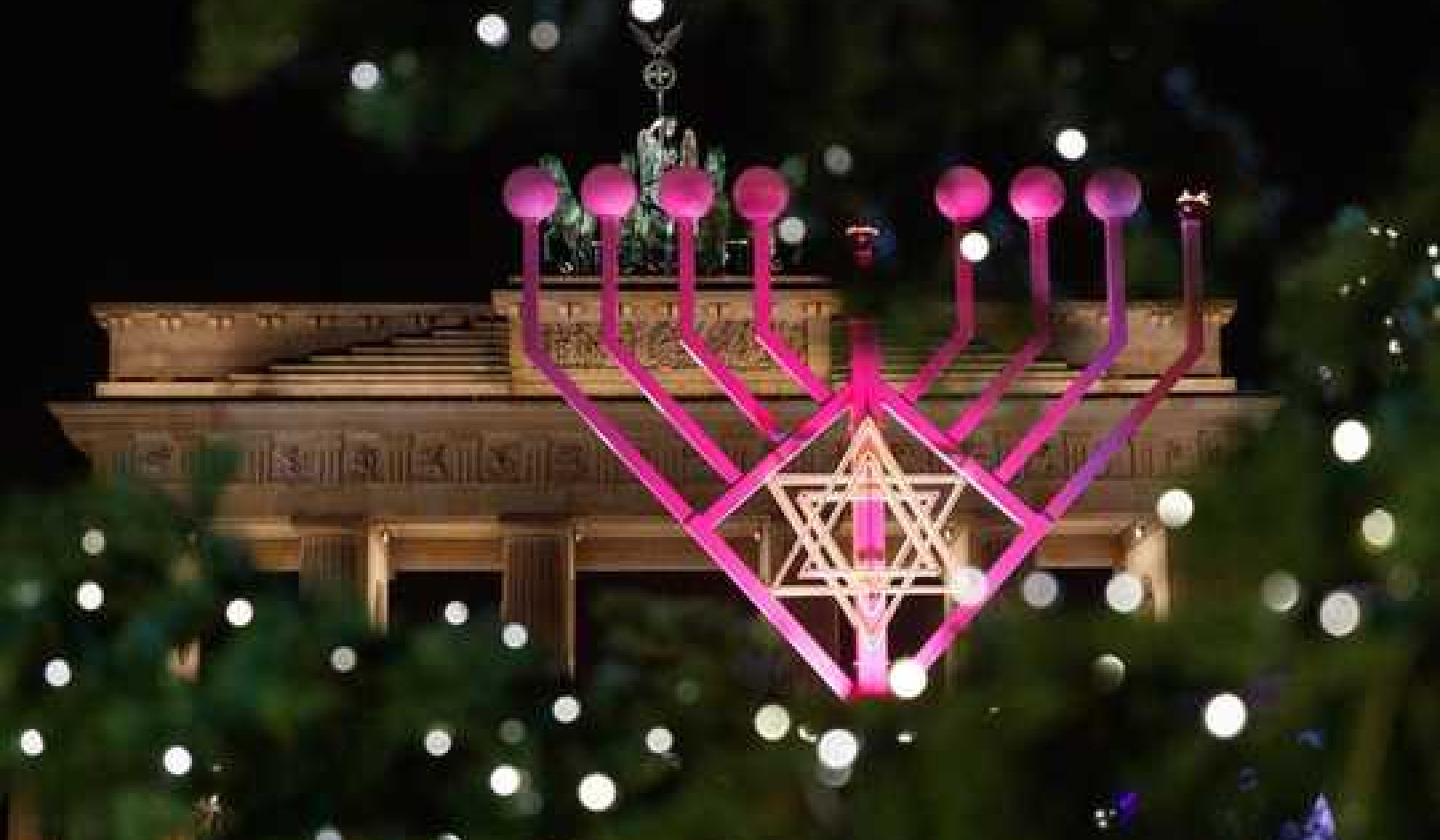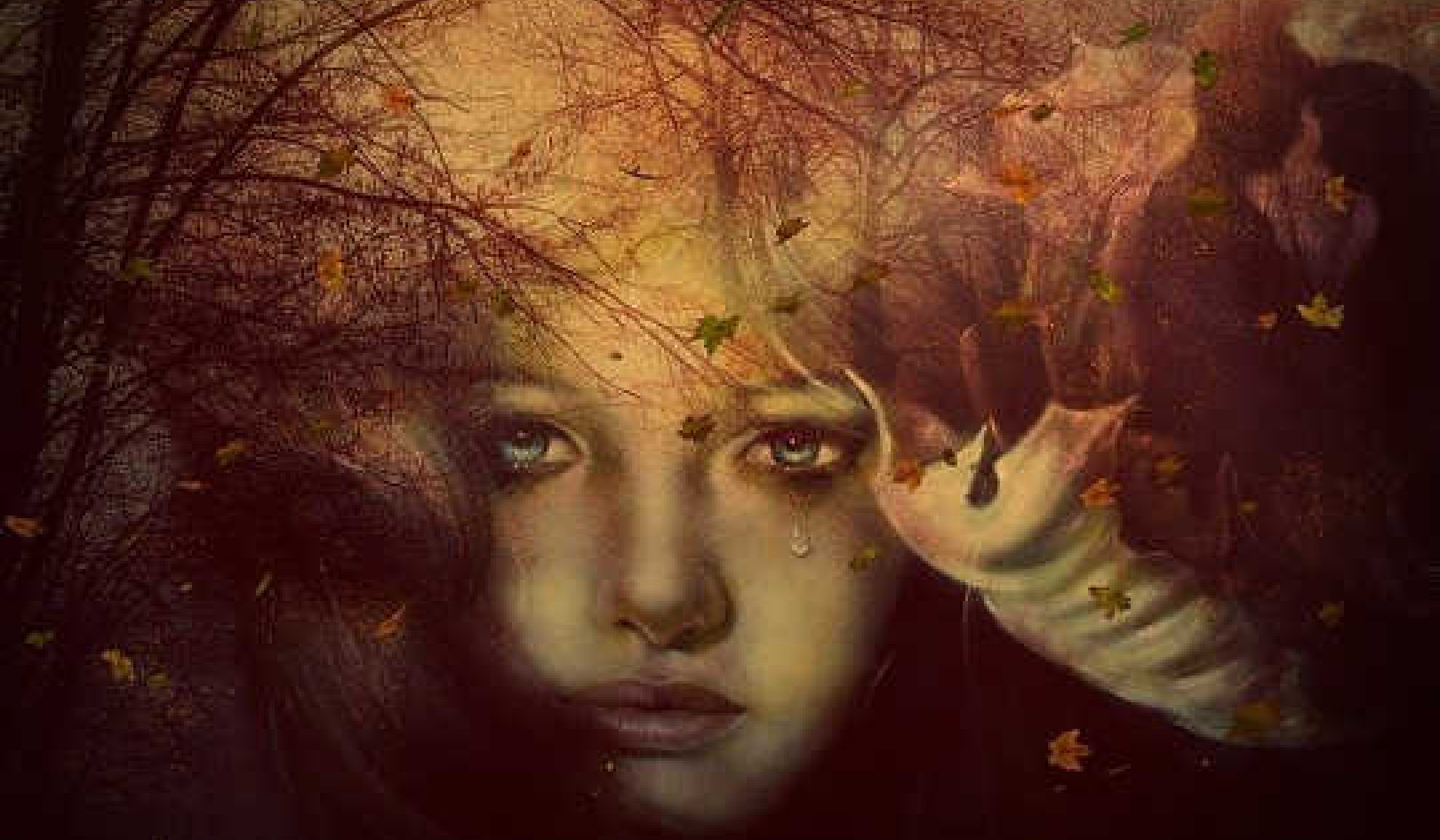
Have you ever seen an angel? Many people have. Perhaps you, too, have seen an angel and didn't know it.
An angel vision is an experience of seeing the Divine, or that which is usually considered invisible. There is a diverse array of angel visions. Some people actually see Renaissance-type angels, complete with wings, with their eyes open. Other people experience their angels as an interaction with an apparition of a deceased loved one. For others, the angel vision comes during a dream, yet the dream is profound, extra-vivid, and often prophetic. Still others have interactions with Jesus, Mary, a saint, or an avatar.
Angel visions also involve pivotal meetings with helpful strangers, who either intervene or deliver an important message... and then vanish without a trace. And some people's angel visions occur when they see signs from above, including unexplained lights, sparkles, and colors.
As a psychotherapist, I was trained to believe that when people see something that isn't there, this represents a visual hallucination. In fact, I worked clinically with many people diagnosed as schizophrenic who told me that they were seeing things and people that I couldn't see. I can only speculate how many of my patients were actually seeing across the veil of heaven and were having angel visions, which we therapists inaccurately referred to as hallucinations.
Many of the angel vision experiences... happened to children, which should come as no surprise. After all, children are less skeptical and less preoccupied with worldly matters, two factors that I believe hamper adults' angel visions. A 1995 University of Ohio study by Dr. William MacDonald concluded that children were statistically more likely to exhibit clairvoyant and telepathic abilities than were adults.
I remember seeing sparkling lights as a child, and feeling deliciously comforted by their presence. The vision of what I now know to be "angel trails" or the electrical sparks radiated by moving angels, has been continual throughout my life. I always knew that, when I saw the bright flash of light or the Fourth-of-July-like sparkles, this was a happy sign validating my current choices. However, I didn't talk about these incidents until recently. Now that I am "out of the spiritual closet" with respect to my angel visions, I find that thousands of other rational, sane, intelligent adults also see angel trails.
Angels in All Shapes and Sizes
Between 72 and 85 percent of Americans believe in angels, according to various polls. One recent survey found that more than 32 percent of Americans said they have encountered an angel. One third of the people surveyed for The Skeptic magazine's poll said that they've seen a "celestial being". Eighty percent of people believe in miracles, and one third have witnessed miracles, according to a 1999 CBS television poll. So one could conclude that it is normal to believe in angels and miracles, and that seeing an angel is a relatively common experience!
But are all of these people talking about the same thing when they say they believe in "angels"? Everyone seems to have their own definition of what an angel is. To me, an angel is anyone who unselfishly helps us. When I talk about angels, I'm usually referring to someone in the spirit world, such as a deceased loved one, a winged Biblical type of angel, Jesus, or a saint, and, of course, God.
Yet, angels also appear on Earth... an opaque, real person who lends help or delivers a timely message. The person later disappears as mysteriously as they first appeared. This is the type of angel that Apostle Paul was undoubtedly referencing when he wrote in his Hebrew letters, "Be careful when entertaining strangers, for by so doing, many have entertained angels unaware."
From a purely technical standpoint, the word angel refers to a spiritual, nonphysical being with wings. The angels are messengers sent to us by our Creator to lend help, guidance, support, and protection. These angelic beings are recognized by all major Eastern and Western religions.
Deceased loved ones are usually called "spirit guides" because they have lived lives as human beings. The implication is that, once we have lived as a fallible human, we are a little denser and less enlightened than angels who have not lived a life on Earth. Of course, the spiritual truth is that we all are one with God and the angels. We are all God's perfect creations. However, in this dream of life, it appears that the angels are less Earthbound in their thinking, and therefore are more centered in a pure consciousness of love.
Jesus, Mary, the saints, and other great spiritual teachers are usually called "ascended masters". They stay closely involved with Earth's population, and are accessible to all who call upon them, regardless of one's religious orientation or practices.
Angel Encounters
Because apparition experiences and angel encounters have happened to so many people, considerable research and documentation is being conducted worldwide.
For instance, since 1998, Emma Heathcote, a theologist from Birmingham University in the United Kingdom, has interviewed several hundred people who have encountered angels. Interestingly, those who were in the age range of 36 to 55 had the highest percentage of angel experiences. Heathcote categorized her study group as follows:
-
26 percent saw a traditional-style angel with wings.
-
21 percent saw a human form, which appeared and then disappeared.
-
15 percent felt a force or a presence.
-
11 percent saw a figure in white.
-
7 percent smelled an unusual, unexplainable scent.
-
6 percent were engulfed by light.
-
6 percent heard a disembodied voice, or heard the voice of the angel or apparition.
-
4 percent felt or saw that they were enveloped in wings.
-
Other: 4 percent.
Apparition Experiences
I had an apparition experience, meaning that I saw and talked to my deceased loved one. It happened when I was 17 years old. My Grandma Pearl and Pop-Pop Ben were visiting my parents, my brother, and me, and I was very excited about it. They'd driven a long way from their Bishop, California, home to our house in the town of Escondido, just north of San Diego.
As a budding adolescent, I was in that stage where I preferred to spend more time with my friends than with my family. Pop-Pop must have understood this, because he insisted on driving me to a party that one of my best friends was having on a Saturday night. During the drive, Pop-Pop told me stories of his own teenage days. I felt a renewed closeness to my grandfather that evening as he dropped me off with a hug.
The next day, Pop-Pop and Grandma Pearl left for their drive back home. It had been a wonderful visit for us all. But about 6 p.m., the phone rang. I watched my father's body shudder violently, and he exclaimed, "Oh, no!" Something was terribly wrong. "There's been an accident," he told us. "Grandma Pearl's in the hospital, and Ben's dead." His words about Pop-Pop's death "Ben's dead"still echo in my ears.
My Mom, Dad, and brother seemed to go into a flurry of emotional upset. They were loudly protesting the situation, crying, and hugging one another. To escape my own distress, I went into my darkened bedroom and grabbed my acoustic guitar.
I absentmindedly strummed the strings, feeling terribly guilty that I wasn't crying about my grandfather's death. It wasn't that I didn't love him, but my honest feelings were that my Pop-Pop Ben was peaceful and that there was no need to feel sad.
Just then, a bluish-white light just past the foot of my bed grabbed my attention. There, standing in the middle of the light was my Pop-Pop! When I first saw the first Star Wars movie years later, the scene with Princess Leia projected from C3PO's stored memory reminded me of how my Pop-Pop looked to me. He was at once three-dimensional, and half of his original size, like a four-foot-tall hologram.
Although I don't recall my grandfather moving his lips, he transferred his thoughts to me with the same familiar voice he'd always had. His words, somehow telepathically transmitted into my mind, were, "You are right to feel this way [referring to my peacefulness]. I am fine." My guilt vanished, and I realized that there was no need for grief. Pop-Pop was all right.
Many of the stories on apparition experiences have similar themes, where a deceased loved one tells the living person, "I'm okay. Please don't worry about me."
Paranormal researchers define apparitions by their features, such as their ability to instantly appear and disappear, with no trace of coming or going. Apparitions also pass through solid objects, walls, and closed doors. They also glide or float, rather than walk.
Surveys in Great Britain and the United States show that between 10 and 27 percent of the general population have had an apparition experience, where they saw and interacted with a deceased loved one. According to author, priest, and sociologist Andrew M. Greeley of the General Social Survey at the University of Chicago, nearly two-thirds of widows have had an apparition experience, mostly with their deceased husbands.
Greeley's research showed that the belief in life-after-death experiences is increasing, and that the majority of people now believe in the soul's survival. He wrote:
Belief in life after death has become more prevalent in the 1990s than it was in the 1970s, according to data from the General Social Survey. Roughly 85 percent of Protestants believe in life after death in every cohort. The change occurred among persons from minority religions and persons with no religious affiliation. The proportion of Catholics believing in the afterlife rose from 67 percent of the cohort born 1900-09 to 85 percent of the cohort born 1960-69. Belief in life after death among Catholics who graduated from college runs about 11 percentage points ahead of its level among Catholics who stopped their educations at the end of high school, and 16 percentage points ahead of Catholics who dropped out of high school.
Among Jews, this belief increased from 17 percent of the 1900-09 cohort to 74 percent of the 1960-69 cohort. Finally, the conviction that the human soul survives death increased among adults who have no religious affiliation (has risen) from 44 percent believing, to 58 percent.
Those who have had an apparition experience say that it's not important whether other people believe them. They know that they've truly encountered the living spirit of a deceased loved one. However, they often don't tell other people about their experience because they want to avoid ridicule or skepticism. Yet, those who have had an apparition experience find comfort in the company of believers and those who have also encountered a deceased loved one. I believe it's time for us to "come out of the spiritual closet" and start openly sharing our apparition experiences. Only then can we realize how common it is. We can also benefit from the loving and transformative wisdom imparted by deceased loved ones. Even though people who have had apparition experiences stand by the validity of their meetings with deceased loved ones, science requires additional ways to verify the authenticity of these events. Two ways that scientists "test" the experience is by noting when a person has received new information from a deceased loved -- for instance, if a deceased loved one accurately tells you about a future event, or if you are told that someone has just died and that was something you did not know up to that point.
Second, researchers look for group apparition experiences, where more than one person simultaneously sees the same apparition. Such group experiences have been reported with apparitions of Mother Mary for decades. In a study of 283 people who have had apparition experiences, two or more people saw and heard the same deceased loved one in about one-third of the cases. A similar study found that 56 percent of the apparition cases involved several people seeing the deceased loved one simultaneously.
Dreaming of Angels and Deceased Loved Ones
Is a dreamtime encounter with an angel or deceased loved one any less valid than a waking angel experience? My research and personal experiences show that sleeping and waking angel experiences are equally profound. For instance, my grandmother Pearl (wife of Pop-Pop) came to me in a dream two years after her passing. She was so real, so palpable, so audible. Grandma Pearl said only two words, but they still ring in my ears: "Study Pythagoras."
I woke up and said, "The triangle guy?" I quickly jotted down her words on the notepad I kept on my nightstand. My knowledge of Pythagoras was limited to high school algebra classes, so I wasn't even sure how to spell his name.
Trusting Grandma, I scoured the Internet and specialty bookstores for Pythagorean material. I learned that the ancient philosopher was a strict vegan vegetarian, and that he and his "mystery school" students would meet in caves to study alchemy and alternative healing methods. Among their discoveries were the vibratory patterns of stringed musical instruments. In particular, Pythagoras noted the mathematical formulas behind different musical notes and chords. The vibration of each tone was thought to hold a specific medicinal quality.
His vibrational studies were akin to the numerological work of ancient Egyptians, who devised systems that were the basis of Tarot oracle cards. I learned that each Tarot card was numbered, and that the number held a specific meaning. Each card's title and artwork also had unique vibrational properties. When a person asks a question and then draws a Tarot card, the vibrational rhythm of their thoughts and emotions would automatically attract a Tarot card with similar vibrational properties. This is referred to as "magnetic attraction".
Because my Grandma Pearl urged me to study Pythagoras, I ended up creating a deck of angel oracle cards, similar to Tarot, but with no negative or frightening cards in the deck. The cards have a life force of their own, because of the magnetic attraction that always draws the right card to answer a person's questions.
The dream also led to my interest in numerology. I learned that the angels often speak to us by nudging us, just in time to see certain number sequences on the clock, on license plates, signs, and other locations. I studied the meanings of the various number sequences that people often see, from their angels' guidance, and wrote a chapter on the number divination in my book Healing with the Angels.
One of the qualities that distinguishes mere dreams from truly psychic dreams is that psychic dreams tend to be especially vivid. In a survey of 229 psychic dreams, John Palmer of the University of Virginia found that 80.5 percent of the dreams were described as "especially vivid". Psychic research expert Ian Stevenson of the University of Virginia School of Medicine concluded that the data about psychic dreams "suggest that vividness in a dream is a marker of paranormality".
Some of the angel visions also occur when the person is meditating or in the middle of receiving a healing session. To me, these angel visions are just as powerful and real as any other type of encounter. Once when I was working with a spiritual healer, I was in a deep trance. Suddenly, I saw a man's face in front of me. Although he'd died before I was born, and I don't remember seeing any photos or videos of him, I absolutely knew that this was my maternal grandfather.
My grandfather told me about some regrets he had about raising my mother. He said that his parental mistakes had deeply affected my mother's self-esteem, which in turn had negatively impacted my own self-worth. I felt a palpable and auditory "whoosh", as if years of emotional pain were being released from my body. The occurrence affected me in a profoundly healing way.
Could It Just Be My Imagination?
One may wonder about the difference between a hallucination and a true paranormal experience. Researcher Bruce Greyson, M.D., studied 68 people who were clinically found to not be schizophrenic. He found that 34 of the people, exactly half of his subjects, reported having an apparition experience.
Ian Stevenson, M.D., quotes researcher D. J. West as giving the definitive distinction between a hallucination and a true psychic experience:
Pathological hallucinations tend to keep to certain rather rigid patterns, to occur repeatedly during a manifest illness but not at other times, and to be accompanied by other symptoms and particularly by disturbances of consciousness and loss of awareness of the normal surroundings. The spontaneous psychic [now often called "paranormal"] experience is more often an isolated event disconnected from any illness or known disturbance, and definitely not accompanied by any loss of contact with the normal surroundings.
In my clinical experience, a hallucination -- the type we think of as connected with mental illness -- generally involves negative, frightening, grandiose, or paranoid themes. The person believes that the CIA is spying on him; or that some agency, person, or entity is out to get him. Yes, people really do become targets of persecution; however, the type of angel and apparition encounters we are exploring all have one common thread: The person involved improves in mood, outlook, or health as a result of having their angel experience. This is a rare, and even unheard of, result of a true hallucination.
Following a hallucination, most people feel insecure, as if they're losing their grip on reality. Following a true angel experience, people feel loved, secure, and saner than ever. "Everything now makes sense" is a common reaction following an angel encounter.
In addition, psychic researchers Karlis Osis, Ph.D., and Erlendur Haraldsson, Ph.D., note that during most hallucinations, the person believes that he or she is seeing a living human being. During apparition experiences, in contrast, the person believes that he or she is seeing a deceased loved one or ascended master.
It's also interesting to note that Emma Heathcote, the U.K. researcher, studied the angel experiences of five blind people and found no qualitative difference between their visions, as compared to the angel experiences of sighted people.
Seeing Is Believing
In the process of teaching thousands of individuals how to see, hear, feel, and know the angels, I've learned a lot about how the human mind, the ego, the personality, and the emotions all impact the desire to interact with these heavenly beings.
Whether your angel experience occurs in a dream or with your eyes wide open; whether you see an angel with wings, a helpful mysterious stranger, or your beloved departed relative, I'm sure you won't mind if I repeat my favorite quote from Apostle Paul:
"Be careful when entertaining strangers, for by so doing, many have entertained angels unaware."
Article Source:
 Angel Visions: True Stories of People Who Have Seen Angels,
Angel Visions: True Stories of People Who Have Seen Angels,
and How You Can See Angels, Too!
by Doreen Virtue, Ph.D.
Reprinted with permission of the publisher, Hay House Inc., ©2000. www.hayhouse.com.
For more info or to order book.
About The Author
 Doreen Virtue, Ph.D., is a psychotherapist who works with the angelic realm. She has appeared on Oprah, CNN, The View, and other talk shows, where she is frequently referred to as "The Angel Lady". Dr. Virtue gives angel readings at workshops across North America each weekend; and she teaches audience members how to see, hear, feel, and know their guardian angels. Doreen's workshop schedule appears on her Website at: www.AngelTherapy.com.
Doreen Virtue, Ph.D., is a psychotherapist who works with the angelic realm. She has appeared on Oprah, CNN, The View, and other talk shows, where she is frequently referred to as "The Angel Lady". Dr. Virtue gives angel readings at workshops across North America each weekend; and she teaches audience members how to see, hear, feel, and know their guardian angels. Doreen's workshop schedule appears on her Website at: www.AngelTherapy.com.

Related Books:
Prayer Journal for Women: 52 Week Scripture, Devotional & Guided Prayer Journal
by Shannon Roberts and Paige Tate & Co.
This book offers a guided prayer journal for women, with weekly scripture readings, devotional prompts, and prayer prompts.
Click for more info or to order
Get Out of Your Head: Stopping the Spiral of Toxic Thoughts
by Jennie Allen
This book offers insights and strategies for overcoming negative and toxic thoughts, drawing on biblical principles and personal experiences.
Click for more info or to order
The Bible in 52 Weeks: A Yearlong Bible Study for Women
by Dr. Kimberly D. Moore
This book offers a yearlong Bible study program for women, with weekly readings and reflections, study questions, and prayer prompts.
Click for more info or to order
The Ruthless Elimination of Hurry: How to Stay Emotionally Healthy and Spiritually Alive in the Chaos of the Modern World
by John Mark Comer
This book offers insights and strategies for finding peace and purpose in a busy and chaotic world, drawing on Christian principles and practices.
Click for more info or to order
The Book of Enoch
translated by R.H. Charles
This book offers a new translation of an ancient religious text that was excluded from the Bible, offering insights into the beliefs and practices of early Jewish and Christian communities.


























